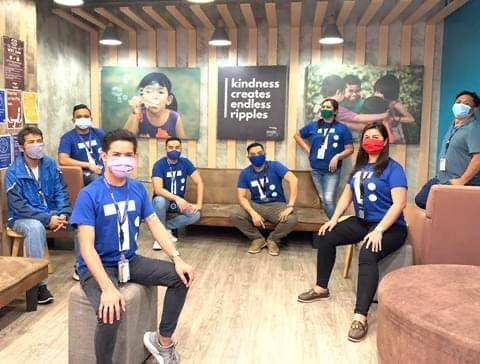You’ve finally booked an appointment with a mental health professional — congratulations! You’re on your way towards a better mind, better you.
Maybe you’re feeling nervous about it; that’s totally normal. Or maybe you just want to be prepared; that’s also commendable. Whatever your reason, we’ve put together some general ideas of what you might expect if you’re headed into therapy for the first time so you’ll feel more at ease.
“When attending a therapy session, go into it with open eyes. Be curious, be honest, ask questions, and do not be afraid. Think of it as talking to a friend.”
Kevin Quibranza, MindNation People & Operations Head
BEFORE THE SESSION:
- Eat a healthy meal, but not too much. If you’re hungry, you won’t be able to focus on the therapy. If you’re full, you might end up feeling sleepy in the middle of the session.
- Dress comfortably but appropriately.
- List down concerns you want addressed or any questions you may have. This allows you to maximize the time you have with the therapist.
- Inform household members that you should not be disturbed for the whole hour (unless it’s an emergency).
- Be in front of your computer at least 10 minutes before your session starts. This will give you enough time to settle down and check for anything (or anyone) who may disturb your privacy, i.e. if family members are around, gently remind them to move elsewhere.
- Bring water because talking will make you thirsty, and you want to avoid leaving your computer –and wasting precious minutes — just to get a glass of water.
- Make sure you’re sitting comfortably; if you want to walk around while talking, that’s also okay as long as you don’t disrupt other people. I wouldn’t recommend lying down during sessions because it can cause drowsiness.
- If you are using your cellphone for the session, make sure to mute all notifications. If you are on your computer, put your phone on silent mode.

DURING THE SESSION
- Because it’s your first time, the therapist will need to conduct an assessment. Some therapists will ask background questions about your childhood or your family to get to know you better. Others will ask you to share what’s on your mind, what’s bothering you, or your reason for seeing them.
- Some therapists take down notes while you speak; others will just listen and write their notes at the end of the session.
- Rest assured that your conversation will be kept in the strictest confidentiality. The therapist-patient relationship is special because it is one where you can be totally honest and not worry about being criticized, interrupted, or judged.
- You won’t be expected to tell your entire life story. If you booked a session for a specific reason, i.e. work stress, then the conversations will only revolve around that topic.
- You won’t be forced to feel anything. It’s okay if you cry, it’s also perfectly okay if you don’t. A healthy therapy is one where there is a connection between the client and the therapist and any emotions that spill out are brought about by that connection and not because it is “expected” of you.
- You are free to take down notes especially if the therapist likes to give instructions or homework. Writing may also help you remember some of the key points raised in the session.
- You don’t have to answer questions if you are not comfortable or ready. It is a therapist’s job to ask intrusive questions, but if they are really making you uncomfortable, just say so.
- If for whatever reason you feel that the therapist’s approach is not effective, it’s okay to let them know and try to find someone else. Choosing a therapist is like choosing a partner — it might take you a few tries but if you find one that you click with, it can really bring about something great.
- Don’t expect all your problems or issues to be solved after just one session. This is a misconception; talk therapy is not a quick fix. We encourage our therapists and clients to foster a connection and have multiple sessions since most of the time, problems are due to bad habits that were formed over the course of our lives and cannot be resolved in just 60 minutes.
AFTER THE SESSION
- Expect to feel tired. Talking through major emotional topics for an hour is draining. Don’t go right into a big client presentation after your session; instead, drink water, calm down, and take some time to process the things that you need to do moving forward.
- Expect homework. Most therapists do this to empower clients to tackle the issues they are facing themselves and not be dependent on the psychologist for their mental healing. The type of homework would depend on your situation and the therapist’s approach, but most use Cognitive Behavioral Theory approaches such as practicing relaxation or stress management techniques.
- Book a follow-up session after two weeks. This will allow the therapist to check on your progress.
When attending a therapy session, go into it with open eyes. Be curious, be honest, ask questions, and do not be afraid. Think of it as talking to a friend. If you are asked questions regarding your situation, try to answer them as honestly as you can because you might end up realizing something new about yourself. It’s all part of the process; go through it, and enjoy the ride.
For those in the Philippines, MindNation psychologists and WellBeing Coaches are available 24/7 for teletherapy sessions. An initial session with a psychologist starts at P1,500, and succeeding consults will cost only P2,500 per hour.
Clients may opt to avail of a 5-session package for only P12,125. On the other hand, the first session with a WellBeing Coach will cost only P500, with additional sessions amounting to P1,000 per hour. Clients may also choose to buy a 3-session package for P2,850 or a 6-session package for P5,550.
Book a session now through bit.ly/mn-chat or email [email protected].



















